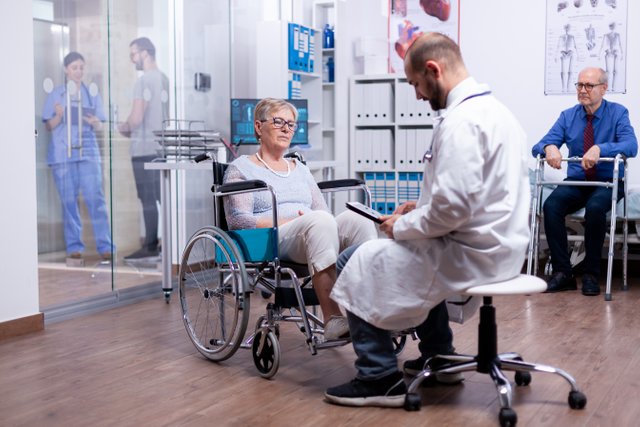What is Stroke Recovery Therapy?

Most patients that suffer from a stroke go through rehabilitation that mainly involves physical therapy. The main focus of physical therapy for a stroke patient is to relearn simple motor activities such as walling, sitting, standing, lying down, and the process of switching from one movement to another. Many times strokes can lead to a long term disability, so the therapy and rehabilitation is extremely important. Unfortunately, strokes happen suddenly and many times you are unaware. In some cases there can be brain cell damage that can be temporary or long lasting but through therapies you can regain functioning over time.
The long term goal of rehabilitation is to help the stroke survivor become as independent as possible. This kind of care should always be done in a motivational way so that the stroke survivor can relearn all basic living skills like bathing, eating, dressing, and walking without added emotional stress. The rehabilitation process after a stroke usually begins within two days of the stroke's occurrence if the condition is stable. All of the rehabilitation continues after you are released from the hospital and there are several ways to go about that continuation.
• A rehabilitation unit in the hospital with inpatient therapy
• A subacute care unit unit
• A rehabilitation hospital with individualized inpatient therapy
• Home therapy
• Returning home with outpatient therapy
• A long-term care facility that provides therapy and skilled nursing care
The rehabilitation program is planned out to help you meet your recovery goals after having a stroke. This team may have many different types of therapists available to help you.
• Physiatrist- specializes in rehabilitation following injuries, accidents or illness.
• Neurologist- specializes in the prevention, diagnosis and treatment of stroke and other diseases of the brain and spinal cord
• Rehabilitation nurse- helps people with disabilities and helps survivors manage health problems like diabetes and high blood pressure and adjust to life after stroke.
• Physical therapist- helps with problems in moving and balance, suggesting exercises to strengthen muscles for walking, standing, and other activities.
• Occupational therapist- helps with strategies to manage daily activities such as eating, bathing, dressing, writing and cooking.
• Speech-language pathologist- helps with talking, reading and writing, and shares strategies to help with swallowing problems.
• Dietician- teaches survivors about healthy eating and special diets low in sodium, fat, and calories.
• Social Worker- helps survivors make decisions about rehab programs, living arrangements, insurance and home support services.
• Neuropsychologist- diagnoses and treats survivors who face changes in thinking, memory and behavior
• Case Manager- helps survivors facilitate follow-up to acute care, coordinate care from multiple providers and link to local services.
• Recreation Therapist- helps with strategies to improve thinking and movement skills needed to join in recreational activities.
The rehabilitation process for those that suffer from a stroke can be extensive and very difficult for the patient and family. It is important to take all aspects of this care into consideration and help the patient regain their strength and independence to the best of their ability with all facets of therapy that are available.